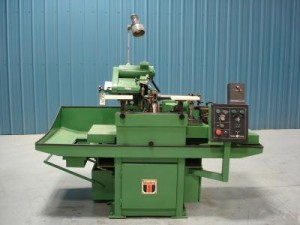 Log graders determine three things: whether certain logs can be used for woodworking, what type of woodworking they can be used for, and their level of quality within the type of woodworking they can be used for. Unlike other woodworking occupations, log grading doesn’t involve the extensive use of tools and machines. Rather, log graders use their education in log grading along with specialty tools such as scale sticks to assess a log’s wood quality. Log grading involves the following tasks:
Log graders determine three things: whether certain logs can be used for woodworking, what type of woodworking they can be used for, and their level of quality within the type of woodworking they can be used for. Unlike other woodworking occupations, log grading doesn’t involve the extensive use of tools and machines. Rather, log graders use their education in log grading along with specialty tools such as scale sticks to assess a log’s wood quality. Log grading involves the following tasks:
• Evaluate log characteristics to determine wood grades.
• Record tree and load volume data into books and handheld electronic devices.
• Identify log grades by marking logs with special symbols in coded colors.
• Inspect logs and pulpwood to determine their physical characteristics and market value.
• Identify shipped logs that do not meet specification.
• Travel to wood shipment and wood processing facilities to inspect logs and pulpwood.
• Use hand signals to direct log movement at log extraction and log processing sites.
Required knowledge
Log graders require the following types of knowledge to carry out their tasks:
• Mathematical knowledge, including knowledge of geometry, arithmetic, calculus, statistics, and algebra.
• Mechanical knowledge of industrial woodworking machinery used in log processing, particularly how it processes logs.
• Production/processing knowledge pertaining to raw materials (logs), the phases of log processing, and quality control.
• Clerical knowledge for creating and maintaining records pertaining to log grading.
• Administration/management knowledge for managing teams of log extractors and project planning.
Required abilities and skills
Log graders require the following abilities and skills to carry out their tasks:
• Near vision for inspecting precise details of logs.
• Critical thinking for managing and solving problems associated with the log extraction and grading processes.
• Quick reaction times in the event logs unexpectedly shift or roll.
• Verbal skills for communicating with team members and resolving conflicts.
• Physical endurance for standing for extended periods of time.
• Physical dexterity for performing frequent bending and kneeling actions.
Job statistics
As of 2008, 6,000 log graders are employed in the U.S., with little change in employment expected between 2008 and 2018. As of 2009, the median annual salary for log graders is $33,700 ($16.20/hr.). According to a national work survey, 33% of log graders have attended college; 32% have a high school diploma or the equivalent; and 24% do not have a high school diploma or the equivalent. Most log graders are either self-employed or employed in the manufacturing industry.
To learn more about becoming a log grader, contacting a trade school that offers courses in wood grading or shadowing log graders who work for a woodworking company are good options. Training in log grading can also be pursued through apprenticeships.




